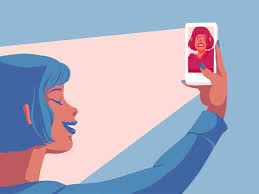 |
SOCIAL MEDIA THE LEADING CAUSE OF DEPRESSION |
Teenage is a unique and formative time. Various physical emotional and social changes make Teenage vulnerable to mental health problems.
If we clearly state facts then according to W H O mental health conditions account for 16 % of the Global burden of disease and injury in people aged between 10 to 19 years.
Suicide is the fourth leading cause of death in 15 to 19 year olds. About 20% of teens experience depression before they reach adulthood and the consequences of not addressing these conditions extent to their adulthood.
An estimated 70% of these problems remain undiagnosed and untreated life long.
Mental health disorders include a wide array of problems including mood disorders like depression bipolar disorders behaviour disorders like ODD (oppositional defiant disorder), eating disorders and much more.
The question which arises here is why the adolescent group is at so much risk.
It could be due to the lack of access to quality support and services, discrimination, exclusion, low self respect and stigma.
They are becoming more sensitive to what others think about them ,the pressure increases more than their brain power to deal with those and lastly the most important cause being social media.
The social media has created a faux pop culture that is relentless in telling who they should be, how they should be and how they should look.
Teens are assaulted with images of perfection everywhere around them.
They are in a phase where constant physical changes are taking place.
Their skin is misbehaving, their bodies are changing, they are trying to look for a purpose in life, exploring the choices and it's quite obvious that they might compare themselves to the happy images they see on social media.
They eventually disconnect themselves from the real world and enter an Oblivion where they feel empty and lonely.
We need to address the need of adolescent by avoiding institutionalisation and need to prioritise non pharmacological approaches like talk it out sessions and counseling sessions.
The aim of various mental health programmes should be to enhance emotional strength ,to build resilience for difficult situations, to promote supportive social environments and networks.
At a time when the world starts unfolding in front of them it closes down for too many of them. Teens deserve to thrive and feel the aliveness that comes with the adventure towards the adulthood.
Hey, thanks for reading this article and please explore the blog for more information on health and wellness.
Comment us about your own experiences on mental health issues.



💯💯👍🏻
ReplyDelete👍🏻👍🏻
ReplyDelete👏👏
ReplyDelete